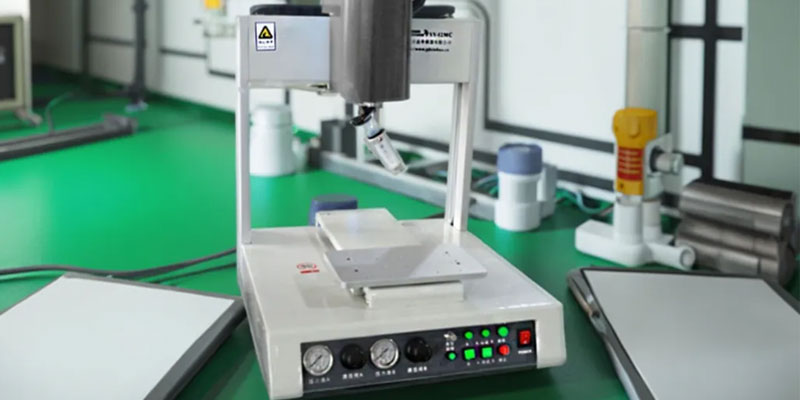What is an Auto Screw Feeder Machine?
An auto screw feeder machine is an automated device designed to deliver screws efficiently and precisely to a fastening location. It’s often used in assembly lines to reduce manual labor and increase productivity, especially in industries like electronics, automotive, home appliances, and more.
These machines streamline the process of screw delivery by sorting, aligning, and feeding screws to a screwdriver or robotic arm — enabling fast, accurate, and continuous fastening.

Key Components of an Auto Screw Feeder
Screw Hopper or Storage Unit
Holds bulk screws before they are sorted.
Feeding Mechanism
Moves screws from the hopper to the outlet in the correct orientation.
Sorting and Alignment Unit
Ensures each screw is properly oriented for delivery.
Dispensing Nozzle or Output Port
Delivers screws to the operator’s tool or to a screw-driving head.
Control System (PLC or Microcontroller)
Regulates the flow of screws and integrates with automation systems.
How Does an Automatic Screw Feeder Work?
The working principle is straightforward:
- Loading: Screws are loaded into a hopper.
- Orienting: The machine aligns screws uniformly.
- Feeding: Screws are transferred to a pickup point using vibratory, air-blowing, or robotic systems.
- Driving: A screw-driving unit picks up the screw and fastens it into the designated spot.
Some advanced systems feature torque control, screw counting, and error detection for maximum reliability.
Types of Auto Screw Feeder Machines
1. Handheld Auto Screw Feeders
- Compact and easy to use
- Ideal for manual assembly with automated screw supply

2. Desktop Automatic Screw Feeders
- Used in small to medium production lines
- Offers better control and consistency
3. Robotic Screw Feeder Systems
- Fully automated, integrated with robotic arms
- Suitable for high-volume, precision-critical operations
4. Vacuum Suction Feeders
- Use vacuum suction to transport screws
- Commonly used in cleanroom and electronics assembly
Benefits of Using an Automatic Screw Feeder
✅ Increased Efficiency
Automates repetitive tasks, leading to faster cycle times.
✅ Consistent Quality
Reduces human error, ensuring uniform torque and screw placement.
✅ Labor Cost Reduction
Minimizes the need for manual handling.
✅ Better Ergonomics
Operators avoid fatigue and repetitive strain injuries.
✅ Smart Integration
Can be integrated with IoT systems for real-time monitoring and quality control.
Applications of Auto Screw Feeder Machines
These machines are widely used across multiple industries, such as:
- Consumer Electronics: Smartphones, tablets, and laptops
- Automotive: Dashboard assemblies, control units
- Home Appliances: Air conditioners, washing machines
- Medical Devices: Compact and precision assembly
- LED/LCD Assembly: Especially where high screw precision is needed
Factors to Consider When Choosing an Auto Screw Feeder
Screw Type and Size
Choose a machine that supports the dimensions and head style of your screws.
Feeding Speed
Match the feeding rate to your production needs.
Integration Requirements
Will it be used manually or with a robotic system?
Space Constraints
Consider the size and layout of your workstation or production line.
Material Compatibility
Stainless steel vs. carbon steel screws may require different feeders.
Customization & Flexibility
Some feeders are adjustable or modular to handle different tasks.
Maintenance and Support
Look for machines that are easy to clean and maintain with available tech support.
Auto screw feeder machines are essential tools in modern manufacturing, especially where speed and precision are critical. Whether you’re running a small electronics workshop or managing a high-volume assembly line, investing in the right screw feeding system can save time, reduce costs, and improve product quality.





